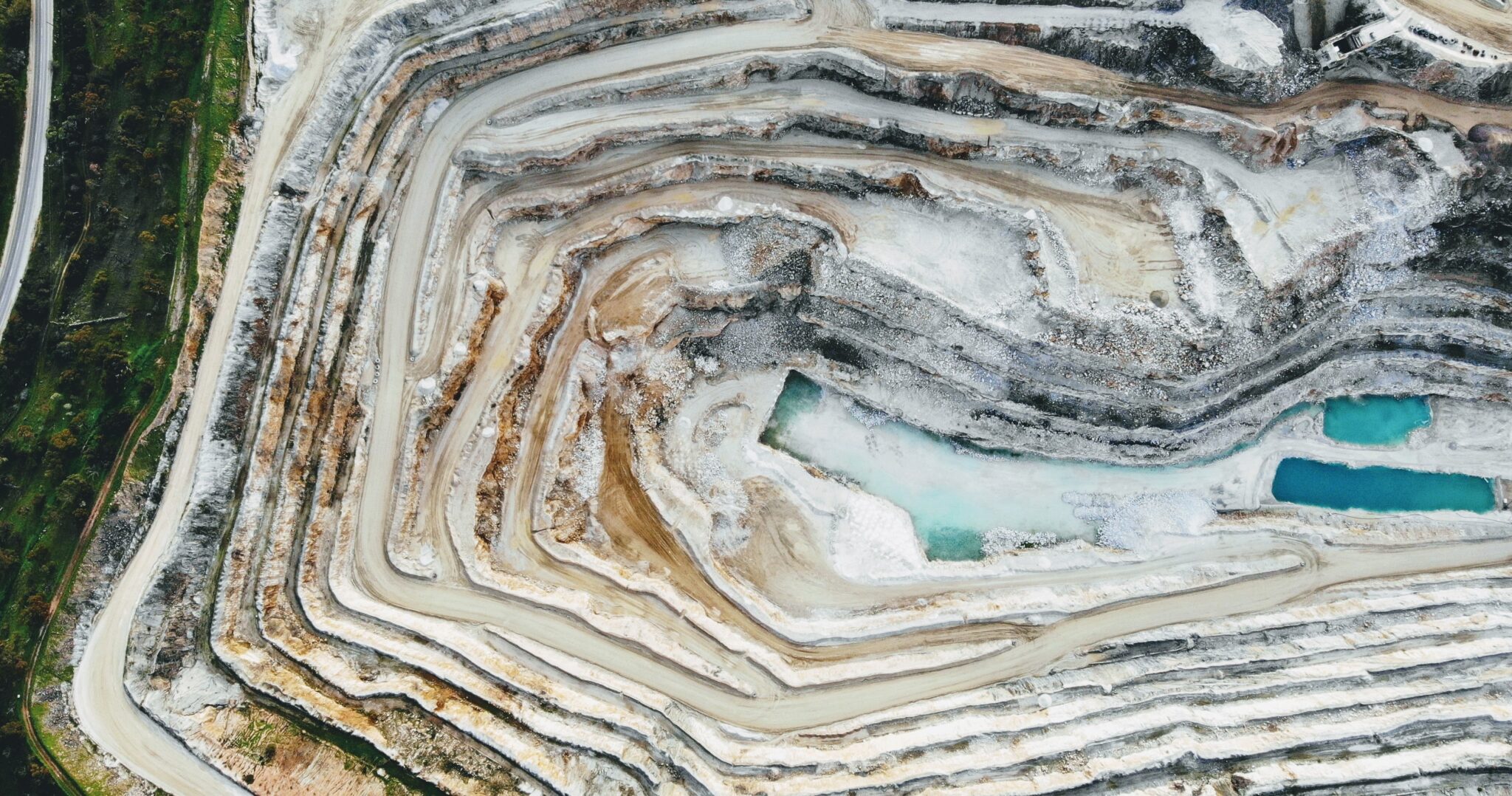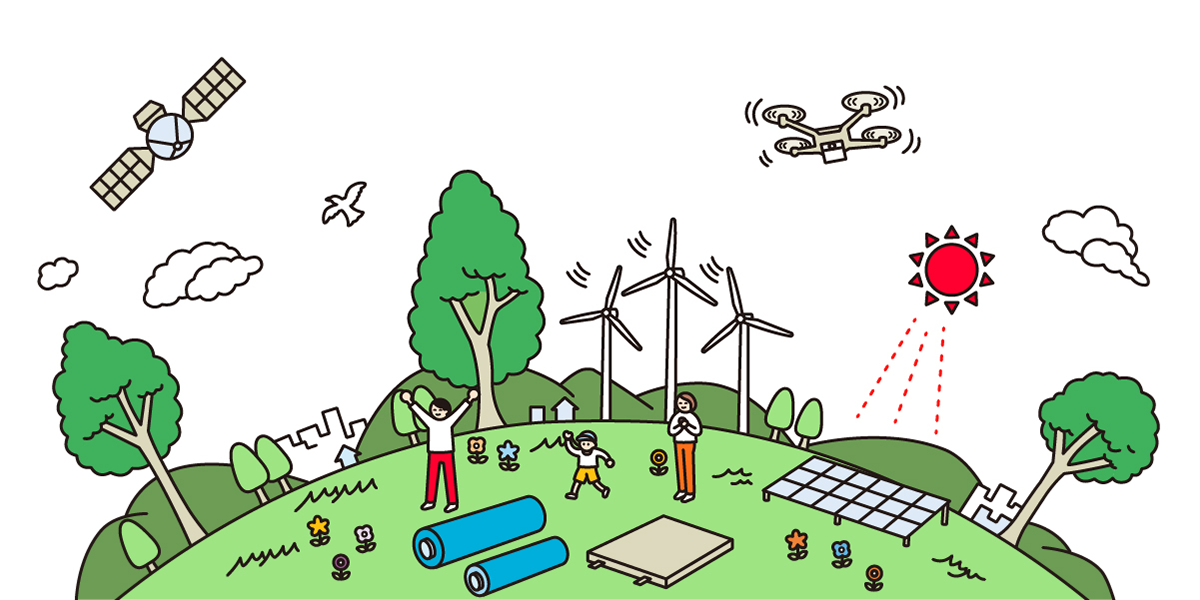Lithium and lithium-ion batteries are seen as the stars of hope for environmental protection, as they help reduce reliance on high carbon emitting fossil fuels and drive the shift towards more environmentally friendly technologies.
These batteries power all devices from smartphones to electric cars, and are at the forefront of the green energy revolution.
This article will explore the complex lifecycle of lithium batteries from mining to processing, and study the lithium ion battery environmental impact.
What is a lithium battery?

Lithium batteries are the core of modern energy storage, providing power for various devices ranging from household appliances to electric vehicles.
These batteries generate current by moving lithium ions between the positive and negative electrodes of the battery.
They can store a large amount of energy in small and lightweight packages, making them crucial in today’s technologically advanced world.
There are various types of lithium batteries, each designed for specific purposes and possessing unique advantages.
These types include lithium-ion (Li-Ion), Lithiumeisenphosphat (LiFePO4), lithium polymer (LiPo), and lithium manganese oxide (LiMn2O4) Batterien.
Types of lithium batteries
Lithium-Ion (Li-Ion) Batterien
This type of battery is widely used in portable electronic devices and electric vehicles due to its excellent energy density and efficiency.
Their service life is generally between 2 Und 10 Jahre, depending on the usage method and maintenance condition.
Lithium ion batteries are known for their lightweight and high charging efficiency, making them an ideal source of energy for devices such as smartphones, Laptops, und Elektrofahrzeuge.
Lithiumeisenphosphat (LiFePO4) Batterie
Lithium iron phosphate batteries are favored for their excellent safety and long service life.
Their expected service life can reach 5 Zu 15 Jahre, making them highly suitable for applications that require high reliability and safety, such as fixed energy storage systems and electric public transportation.
These batteries are less prone to overheating, reducing the risk of thermal runaway and enhancing safety.
Lithium-Polymer (LiPo) Batterie
Lithium polymer batteries are commonly used in drones, remote control devices, and certain portable electronic devices.
They have flexible shapes and lightweight designs, but typically have a lifespan between 2 Und 5 Jahre.
Although they have high power density and can be shaped into various forms, they are more sensitive to physical damage and require careful handling to avoid safety risks.
Lithium -Manganoxid (LiMn2O4) Batterie
Lithium manganese oxide batteries are popular for their moderate price and good performance, and are commonly used in electric tools, medizinische Ausrüstung, and some electric vehicles.
Their service life is generally between 3 Und 7 Jahre.
These batteries achieve a good balance between safety, kosten, und Leistung, making them suitable for various application scenarios.
How do lithium batteries work?
The operating mechanism of lithium-ion batteries is based on the movement of lithium ions between the two electrodes of the battery – the positive electrode (Kathode) and the negative electrode (Anode) – through the electrolyte.
Während der Entladung, lithium ions migrate from the anode to the cathode, generating an electric current that provides power to the connected equipment.
Beim Laden, lithium ions return from the cathode to the anode and are stored at the anode until the battery is discharged again.
The reversible mobility of lithium ions enables the battery to be repeatedly charged.
The special materials used for electrodes and electrolytes in batteries have a significant impact on battery performance.
Die Anode besteht üblicherweise aus Graphit, while the cathode is composed of lithium metal oxides such as lithium cobalt oxide or lithium iron phosphate.
Electrolytes are lithium salts dissolved in organic solvents, which facilitate the movement of lithium ions between electrodes.
This material combination endows the battery with high energy density, allowing lithium-ion batteries to store large amounts of energy in small and lightweight packages, making them an ideal energy solution for portable electronic devices and electric vehicles.
The advantages of lithium batteries in the transition to a green environment
Lithium batteries play a crucial role in promoting green transformation.
With global efforts to reduce greenhouse gas emissions and decrease dependence on fossil fuels, lithium batteries have facilitated the transition to cleaner energy solutions.
In the field of electric vehicles, lithium batteries provide a zero emission alternative to internal combustion engines that rely on fossil fuels, significantly reducing air pollution and carbon emissions.
Zusätzlich, lithium batteries are crucial for storing renewable energy sources such as solar and wind power.
This energy storage capacity solves the intermittency problem of renewable energy, ensuring stable power supply even in the absence of sunlight or wind.
The widespread application of lithium batteries also benefits from the continuous advancement of battery technology, which improves energy density, charging speed, and overall performance.
These technological advancements make electric vehicles more affordable and suitable for daily use.
Zusätzlich, the development of grid scale lithium battery energy storage solutions is enhancing the ability of renewable energy to integrate into the national power grid, promoting the construction of more sustainable and resilient energy infrastructure.
What is the impact of lithium batteries on the environment?
It is logical to consider lithium and lithium-ion batteries as environmentally friendly choices.
Schließlich, using batteries can reduce reliance on other high carbon emitting energy sources.
Taking electric vehicles as an example, they use lithium-ion batteries. By choosing electric vehicles, we can reduce our consumption of fossil fuels such as oil.
Jedoch, lithium batteries also deserve attention due to their potential negative impact on the environment.
Let’s delve into the environmental issues related to lithium batteries.
Environmental challenges of lithium mining

One of the main reasons why lithium and its batteries are considered harmful to the environment is that the extraction process of lithium is extremely destructive to the environment.
Derzeit, the commercial mining of lithium is mainly carried out through two methods, namely salt lake lithium extraction and open-pit mining:
Salt Lake Lithium Extraction
Most of the global lithium production relies on salt lake extraction, which utilizes naturally occurring lithium rich salt deposits in underground salt lakes.
These salt lakes are mainly located in the so-called Lithium Triangle, an area spanning the borders of Bolivia, Argentinien, and Chile. The region is known for its abundant lithium resources, with an estimated 56% of the world’s known lithium reserves.
Open pit mining method
Another commercial way to obtain lithium is through hard rock mining, which is more complex and resource intensive compared to extracting lithium from salt lakes.
Australia is the main region for open-pit mining operations worldwide, with smaller scale mining activities also occurring in Brazil, Portugal, Südafrika, and China.
It is expected that Finland and North America will also begin lithium mining in the coming years.
Lithium battery environmental impact
Although lithium-ion batteries are often seen as environmentally friendly solutions, they are crucial for reducing dependence on fossil fuels and mitigating climate change.
They provide power for various devices, from electric vehicles to smartphones, and are key technologies driving the transition to clean energy.
Jedoch, behind the environmental benefits of lithium-ion batteries lies a huge hidden environmental cost.
The mining and processing of lithium and other rare earth metals have had significant impacts on the environment and the local area.
Its mining provides job opportunities but also brings environmental issues.
With the increasing demand for these batteries, the scope of these impacts is also expanding.

Land degradation and habitat destruction
Especially open-pit lithium mining can cause degradation of large areas of land.
In order to carry out mining operations, large areas of land need to be cleared, which damages natural habitats and leads to a significant reduction in biodiversity.
Zum Beispiel, in Western Australia, the expansion project of the Greenbushes lithium mine has sparked significant controversy as it involves clearing approximately 350 hectares of pristine vegetation, affecting several endangered species including black cockatoos and western ring tailed opossums.
Water resource depletion and pollution

The consumption of water resources is a major environmental issue in the process of lithium mining.
Producing one ton of lithium requires approximately 2.2 million liters of water, which results in valuable water resources being diverted from local agriculture and indigenous communities.
Mining activities may also cause soil degradation, rendering it unsuitable for vegetation growth and ultimately damaging the local ecosystem.
In arid regions such as the lithium triangle in South America (covering parts of Bolivia, Argentinien, and Chile), lithium mining consumes a significant amount of water resources.
Zum Beispiel, in the Atacama Salt Flats in Chile, mining operations consume approximately 200000 liters of water per day.
This accounts for about 65% of the water resources in the region, leading to severe water scarcity issues.
The leaching process of lithium
The leaching process of extracting lithium from ores using chemical solutions poses significant challenges to the environment.
The chemicals used in these processes may seep into the soil and groundwater surrounding the lithium leach field, causing long-term environmental pollution.
Zusätzlich, the leaching process and solvent evaporation can release harmful chemicals into the atmosphere, causing air pollution and posing a threat to the health of local residents.
The repeated use of chemical solvents can reduce soil quality and cause long-term ecological imbalances.
Mining activities consume a large amount of water resources, exacerbate the drought situation in the region, and threaten the livelihoods of local farmers and indigenous communities.
Zusätzlich, the mining process leads to soil pollution and degradation, making the land unsuitable for agricultural activities and damaging the local ecosystem.
Due to the release of harmful chemicals during the mining process, air quality is also affected, posing a risk to the health of nearby residents.
These issues reveal the broader impact of lithium mining on local environments and global sustainable development efforts, highlighting the urgent need for more sustainable mining practices and regulatory oversight.
The impact of other metals in lithium batteries on the environment
Lithium ion batteries also contain several other metal components that may have a serious impact on the environment.
Zum Beispiel, cobalt and nickel are two such metals, and their mining and processing processes also cause significant environmental burdens.
The impact of cobalt mining
The mining of cobalt is mainly concentrated in some areas of Africa, especially in the Democratic Republic of Congo.
The mining of cobalt has caused great harm to the environment because it has high toxicity from the beginning of mining.
The Democratic Republic of Congo holds approximately half of the world’s cobalt reserves and currently accounts for 70% of global cobalt production.
The problem is further exacerbated by the surge in manual mining activities, namely temporary mining, which typically relies on child labor to extract metals due to the rise in metal prices.
Workers usually do not have appropriate protective equipment, and the mining methods are extremely dangerous.
These temporary mining activities may not only cause casualties, but also damage the environment.
The disorderly dumping of toxic substances is damaging the landscape, polluting water sources, and even affecting crops.
Mining of Nickel Ore
Nickel, as a metal widely used in industry and consumer goods, is also a key component of lithium-ion batteries.
The mining process is related to a series of environmental issues, such as air pollution, water pollution, soil degradation, and destruction of natural habitats.
The distribution of Nickel ore is mainly in countries such as Australia, Kanada, Indonesien, Russland, and the Philippines.
There are significant differences in regulatory and legal frameworks for mining operations among these countries and regions, resulting in significant variations in safety standards and environmental protection measures.
In einigen Gebieten, inadequate regulation may exacerbate environmental degradation issues and increase health risks for workers and local communities.
The extraction process of nickel involves several high-risk steps.
Nickel ore is usually mined from open-pit or underground mines, and then processed to extract nickel.
This processing process releases sulfur dioxide and dust containing nickel, Kupfer, Kobalt, and chromium, which are known to be harmful to human health.
Sulfur dioxide is a serious air pollutant that can cause respiratory problems and acid rain, while dust can be carcinogenic.
In areas where environmental regulations are not strict, workers, local communities, and the surrounding environment face particularly high risks.
Zum Beispiel, in the Philippines, nickel mining operations are associated with coastal water pollution, affecting marine life and fishing communities.
Research on the waters near cobalt mines has shown that fish have abnormally high levels of cobalt in their bodies.
This pollution is damaging the ecosystem, and when humans consume these fish or drink water from the same source, these harmful substances are easily transmitted to humans.
Due to cobalt being considered a potential carcinogen, it poses a significant threat to human health.
The Challenge of Sustainability and Alternative Choices for Lithium Batteries

Despite environmental challenges, mineral resources such as lithium, Kobalt, and nickel are limited and will eventually be depleted.
daher, researchers worldwide are seeking more environmentally friendly and sustainable alternative energy solutions.
A promising alternative is sodium ion batteries.
Unlike lithium, sodium resources are abundant and widely distributed, making it a more sustainable choice.
Sodium ion batteries can use manufacturing processes and equipment similar to lithium-ion batteries, which helps manufacturers transition more smoothly.
Zusätzlich, compared to lithium, the extraction of sodium requires much less water, greatly reducing its environmental impact.
Zum Beispiel, the amount of water required to extract one ton of lithium is 682 times that of extracting one ton of sodium.
Sodium ion batteries have been applied in various fields, especially in the energy storage field of renewable energy systems.
Although the energy density of sodium ion batteries is lower than that of lithium-ion batteries, people are constantly improving to enhance their efficiency and lifespan.
These batteries are safer, more stable, and have a lower risk of overheating and fire, which is a significant advantage compared to lithium-ion technology.
Another alternative being explored is solid-state batteries, which use solid electrolytes instead of liquid electrolytes.
This technology provides higher energy density and higher safety as it eliminates the risk of leakage and reduces flammability. Solid state batteries are still in the development stage, but they have enormous potential for future energy storage.
Zusätzlich, lithium sulfur batteries are gradually becoming a potential alternative.
These batteries use sulfur on the cathode, which is more abundant and cheaper than cobalt and nickel used in traditional lithium-ion batteries.
Lithium sulfur batteries have higher energy density and lighter weight, making them suitable for applications such as drones and portable electronic products.
Opinions on lithium ion battery mining
Many environmentalists in Europe and America hold a negative attitude towards lithium ion battery mining.
They strongly believe that lithium mines and other substances can have an impact on the environment.
But human activities cannot be separated from the use of natural species and elements.
The impact on the environment can be remedied and coordinated through methods such as chemical treatment.
If extreme vegetarians like some European and American countries do, it will actually affect the evolution of the natural food chain.
If you are concerned about environmental health and have a demand for lithium battery products, Sie können konsultieren GycxSolar.
Help you achieve a perfect shopping experience.
Zusammenfassen
In addition to exploring alternative minerals for lithium-ion batteries, scientists are also researching how to more effectively recycle waste materials from lithium-ion batteries.
This will help minimize our demand for mining mineral resources on Earth, while also limiting the potential environmental damage caused by chemicals that may be released from waste batteries.
Vorausschauen, innovative and sustainable methods are crucial for addressing this challenge.
Researchers worldwide are committed to developing more environmentally friendly and sustainable alternatives to lithium-ion batteries, and advances in battery recycling technology will help reduce the demand for new resource extraction and mitigate the impact on the environment.
